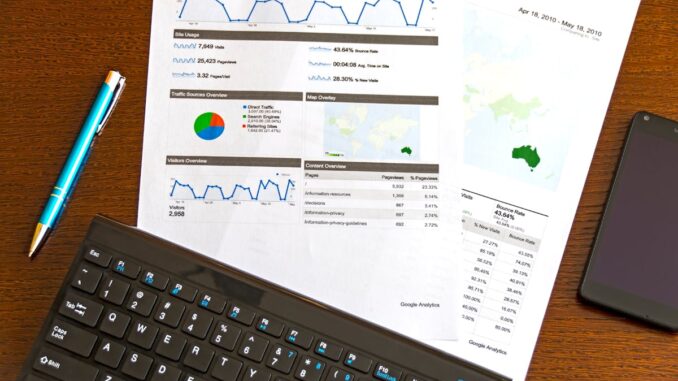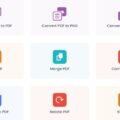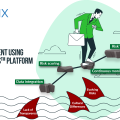
Spreadsheets are great for organizing data, but presentations convey key information visually better. Translating rows and columns into compelling slides is an invaluable skill. This guide will walk you through simple techniques to visualize spreadsheet data – like charts, tables, and diagrams. You’ll soon become adept at turning data visualization presentation with practice.
The importance of data-driven presentations
Using data visualization presentation helps ensure you are grounding your insights and recommendations in facts vs opinions. Quantitative data like charts and graphs can powerfully visualize trends and patterns. Qualitative data from surveys, interviews, etc., can showcase authentic customers verbatim to humanize findings. You build trust and confidence in your conclusions by leading with credible data. Data separates subjective viewpoints from evidence-based takeaways that provide the foundation for data-driven decision-making.
Types of data
1. Quantitative data
Quantitative data represents measurable metrics like revenue, costs, conversion rates, etc. This structured data from databases, analytics tools, etc, can be analyzed with statistics to spot trends.
2. Structured data
This data has a high degree of organization and fits neatly into tables or databases. For example, numerical data like sales figures, survey responses with multiple choice answers, or customer information stored in tables. Structured data is easy to input into charts and graphs.
3. Qualitative data
Qualitative data captures subjective feedback and opinions through focus groups, interviews, and open-ended survey questions. This unstructured text data brings human insights to the fore. Quantitative and qualitative data provide factual evidence and human color around preferences, attitudes, and behaviors. Using rigorously gathered quantitative inputs and authentic qualitative findings allows for data triangulation, leveraging multiple sources to validate conclusions.
4. Unstructured data
This refers to data that does not have a predefined structure or organization. Unstructured data could include long-form text like customer reviews, audio/video files, social media posts, etc. This type of qualitative data often requires analysis to identify themes and extract insights. While challenging to visualize, unstructured data captures helpful context.
Common data visualization
1. Charts: Charts are a great way to display data trends over time or compare categories visually. Common charts include bar charts, pie charts, and line charts. Charts allow viewers to interpret patterns and relationships in data quickly. For example, a line chart can showcase revenue growth over several years.
2. Graphs: Graphs are similar to charts but tend to showcase the mathematical relationships between quantitative variables. Common graphs include scatter plots, histograms, and box and whisker plots. Graphs are useful for visually identifying correlations and distributions in a data set. For example, a scatter plot can indicate the relationship between advertising spending and sales revenue.
3. Infographics: Infographics condense complex data into visually engaging graphics and text explanations. They combine data visualizations, images, and concise text to tell a story and showcase critical takeaways. For example, an infographic may use icons, maps, charts, and timelines to explain trends and insights from a market research report. Infographics help simplify complex concepts and draw attention to key data points.
Storytelling with data
Effective data storytelling presentation brings life by weaving a compelling narrative. Rather than simply displaying charts, great presenters use data to illustrate key points supporting their message. They visually guide the audience through the data, highlighting important trends and relationships. Impactful data stories add context and meaning to numbers, resonating emotionally with audiences. The best storytellers understand that data should simplify rather than overwhelm enlightening audiences rather than confusing them.
Incorporating visuals and multimedia
Data visualization presentation can incorporate various visual and multimedia elements to reinforce key data insights. This includes charts and graphs that showcase essential data clearly and concisely. Pictures, diagrams, and illustrations add color while underscoring essential points. Video clips and animated sequences can demonstrate concepts dynamically. Infographics simplify complex information into easily digestible graphical representations. Multimedia elements like sound effects and music elicit emotional responses that text alone cannot.
When used judiciously, visuals and multimedia make data more accessible, memorable, and impactful for audiences. The most effective data visualization presentation harnesses these elements to bring dry numbers to life. Moreover, utilizing data visualization in PowerPoint is a particularly effective method to convey these insights.
Tips for data visualization presentation
Here are some tips for effective data visualization presentation:
- Keep it simple: Don’t overwhelm your audience with too much data or complex charts. Focus on the key data points and trends. Simple bar charts, line graphs, and pie charts are usually best.
- Label and explain: Make sure to include clear labels, legends, and titles so the audience understands what they are looking at. Briefly describe the significance of the visualization.
- Prioritize insights: Emphasize the main insights, conclusions, or takeaways you want the audience to grasp rather than just presenting raw data.
- Consider flow and sequence: Organize your data visualizations in a logical order that supports the narrative of your presentation.
- Use color thoughtfully: Colors can help highlight patterns, but avoid using too many colors or color combinations that are hard to decipher.
- Include context: Give brief context about where the data comes from, what periods it covers, and any limitations. This builds credibility.
- Focus visuals on your key points: Align the main data visualizations with your most important points to work together to drive your message home.
- Check accessibility: Use color schemes, fonts, and legible graphic elements for visually impaired viewers.
Conclusion
Transforming spreadsheets into compelling slide decks isn’t just about showcasing data; it’s about telling a story that sticks. With the right blend of visuals, narrative, and insight, your efforts presenting data visualizations can captivate, inform, and persuade. Remember, simplicity, clarity, and relevance are your best tools. Dive into your data, wield these techniques wisely, and watch your stories change minds and inspire action.








